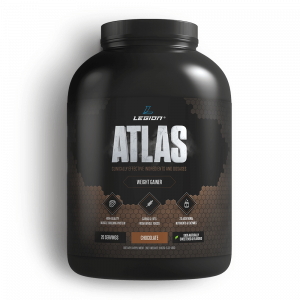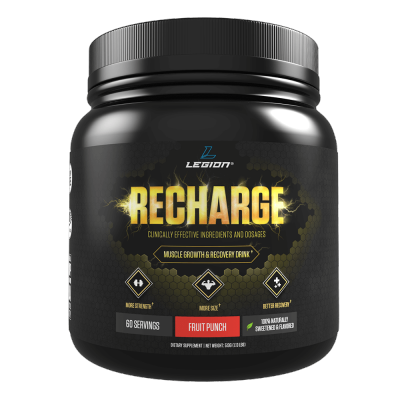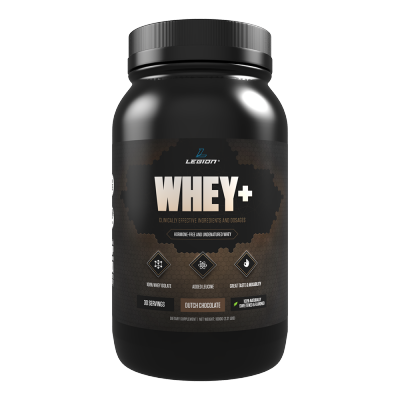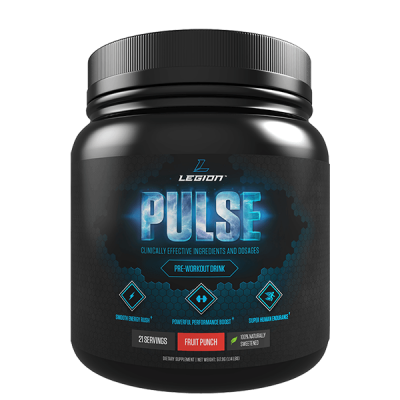Key Takeaways
- The traps are one of the largest and most prominent back muscles, and they contribute substantially to the thickness of your upper back and neck.
- The best trap exercises are pulling movements that heavily involve (but don’t necessarily isolate) the traps, and that allow you to safely move heavy loads and best improve your strength.
- The best way to build great traps is to build a great back, and the best way to build a great back is to get really strong on a handful of key exercises.
I’ll be the first to admit that I don’t have a fetish for traps.
Yes, I want them to be developed and proportionate with the rest of my physique, but I still kinda like having a neck.
That said, there was a time when even I thought my traps were too small, and especially compared to my chest and biceps.
(Gee, I wonder why that was? Pressing and curling too much and pulling too little? Who does that!?)
Here’s what I’m talking about:
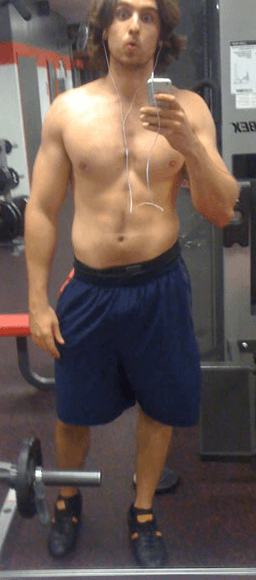
Pretty MEH considering I had been lifting consistently for about 7 years when I took this picture.
Well, fast forward to today and here’s where I’m at now:

And from the back:

Sure, I’m not about to win a bodybuilding show (not for me anyway), but I’m pretty happy with what I’ve been able to do with my traps (and physique on the whole).
As you can see, well-developed traps helps “frame” your upper body and aesthetically connect your neck to your shoulders. It also makes your torso look thicker, which in turn makes your waist look smaller from the side.
And in this article, I’m going to share with you the key lessons I’ve learned about building my traps, so you can break (or stay) out of the rut I was once stuck in and get the traps you really want, too.
Not only that, but I’m going to give you a trap/back workout routine that will help you put everything we’re going to discuss into practice. If you follow this routine, your traps will get bigger and stronger, I guarantee it.
Let’s get started.
- The Anatomy of the Trap Muscles
- The Simple Science of Effective Trap Training
- The Best Trap Exercises
- The Ultimate Trap Workout
- What About Supplements?
- The Bottom Line on Trap Exercises
Table of Contents
+The Anatomy of the Trap Muscles
“Trap” is short for trapezius, which is a large, flat, diamond-shaped muscle that connects the upper spine to the shoulder blade and collarbone.
You have two trap muscles (one on either side of your body), which is why they’re usually called “the traps.”
Here’s what they look like:
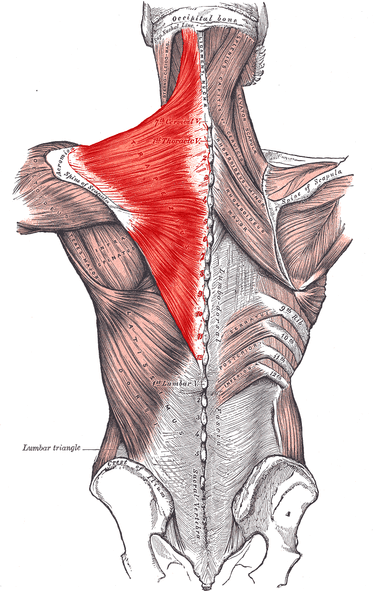
And here’s a 360-degree view:

As you can see, the traps have three main sections:
- The superior or upper traps start at the vertebrae along the base of the neck and attach to the top of the collar bone.
- The transverse or middle traps start at the vertebrae between the shoulder blades and attach to the top of the scapula.
- The inferior or lower traps start at the vertebrae along the center of the spine and attach to the bottom of the scapula.
These muscles are involved in all types of upper body movements, including raising and lowering the shoulders during shrugging movements, retracting the scapula during overhead and horizontal pressing movements, and stabilizing the upper spine during pulling and squatting movements. They also help stabilize your shoulder during most arm movements, like barbell curls, shoulder side raises, and triceps pressdowns.
Here’s a shot of my traps in action on one of my favorite exercises for isolating the lats:
As you can see, when viewed from behind, the traps add muscle definition between the two other major back muscles, the rhomboids and lats.
And here are a few good examples of guys who have done well developing their traps following my Bigger Leaner Stronger program:
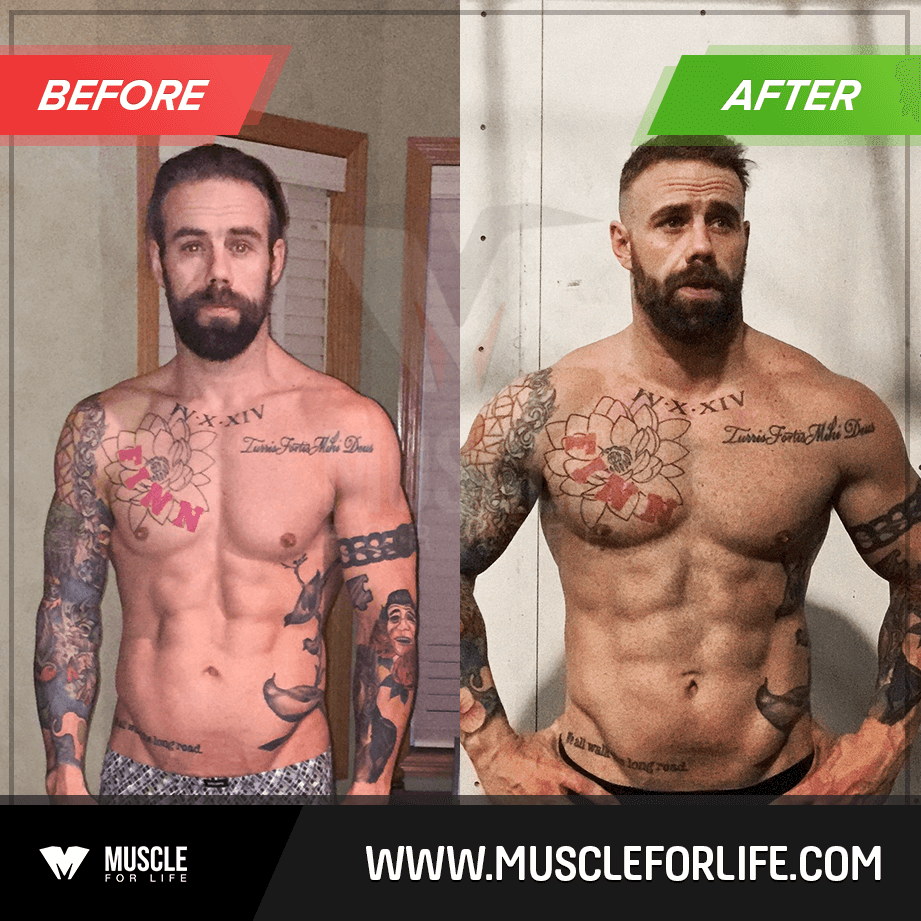
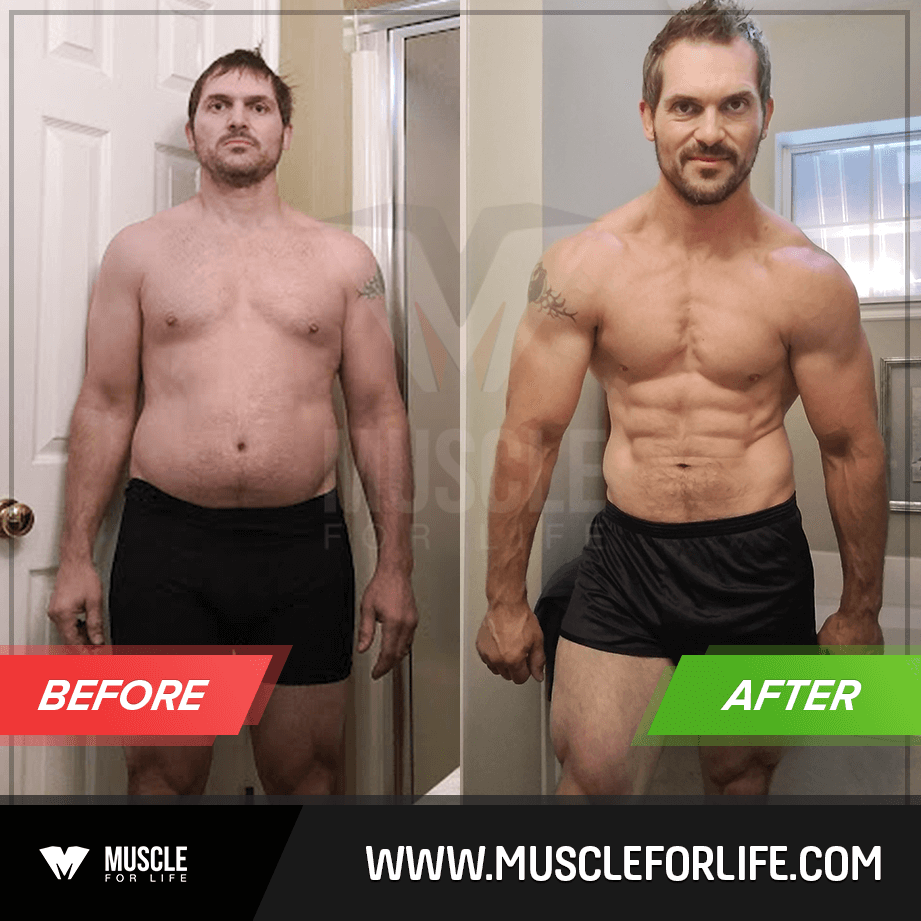
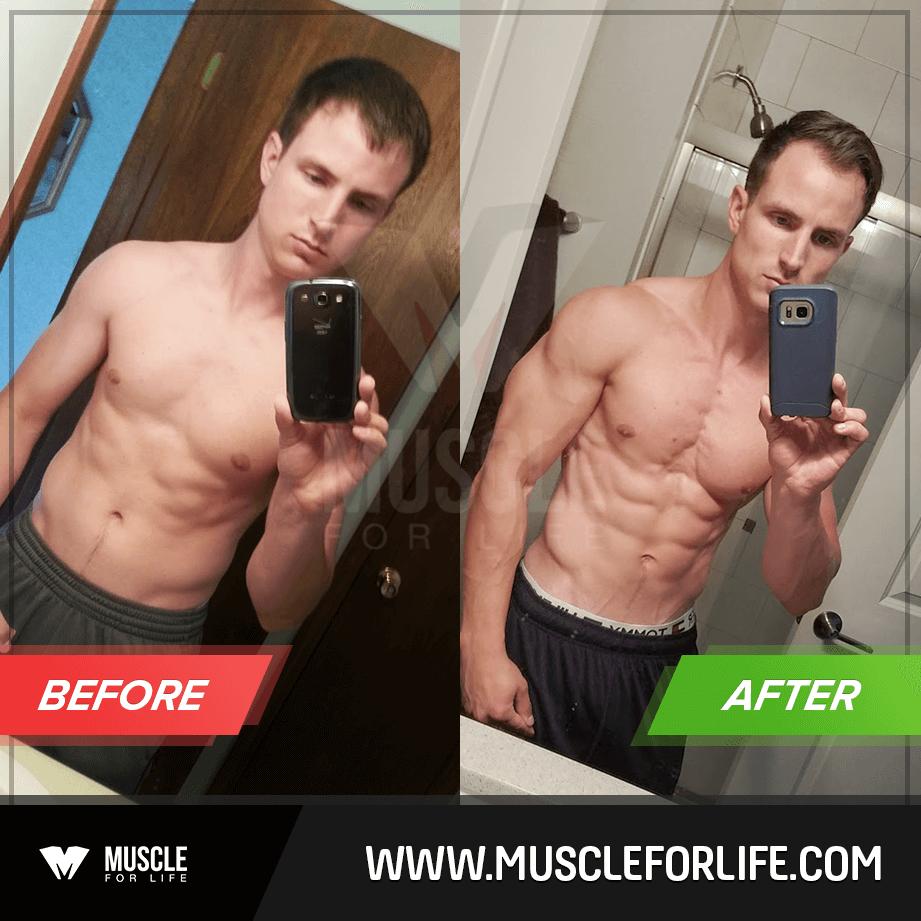
Now, most women don’t want bigger traps per se, which is why I don’t include any direct trap work in my programs for women, including Thinner Leaner Stronger. That said, most of the exercises that help develop the traps also target the shoulders, lats, and biceps, which are on most women’s wish list.
If you’re still worried that developing your traps is going to make you look “blocky,” or “manly,” check out these women who followed Thinner Leaner Stronger:

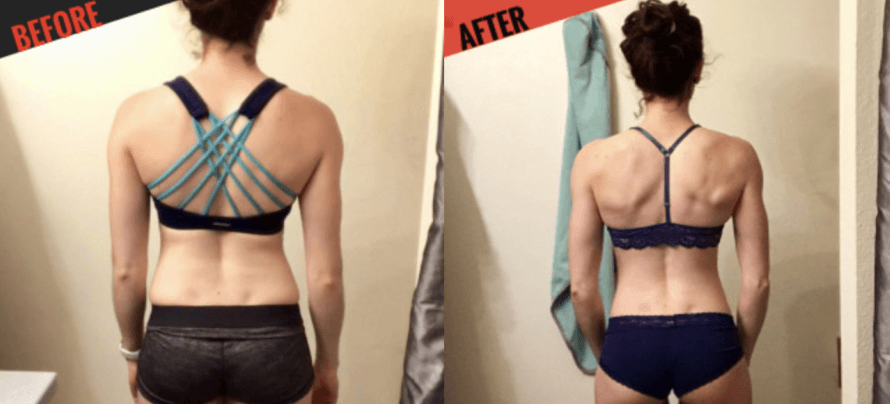
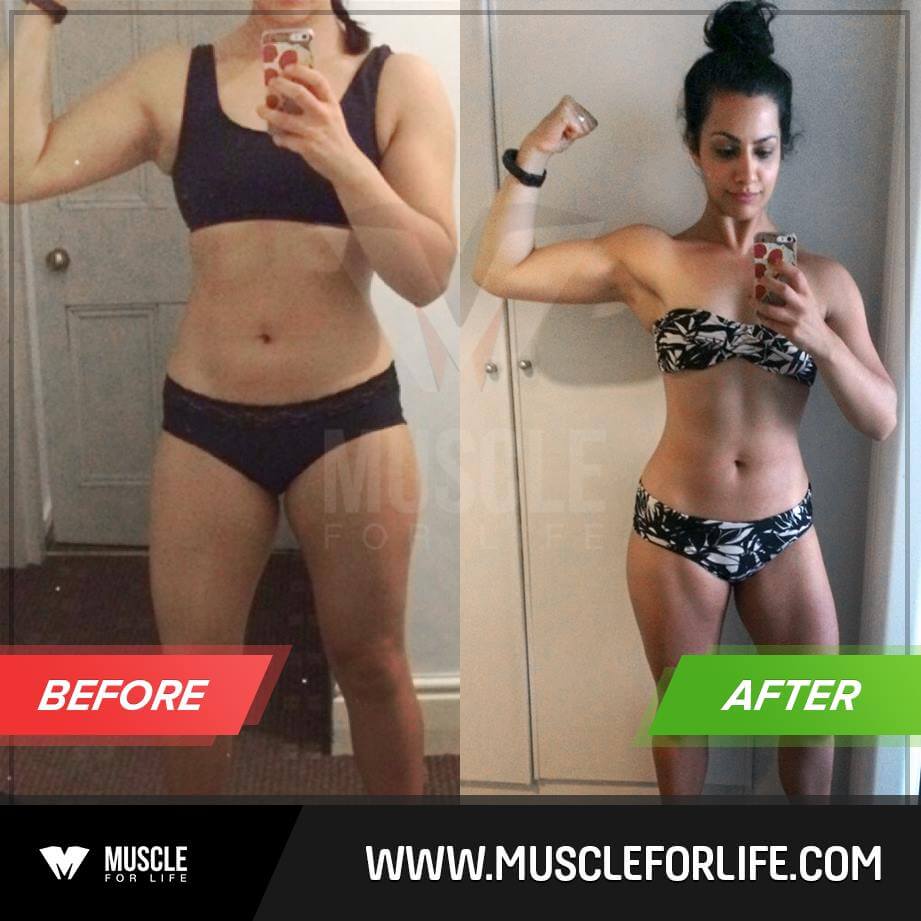
Each of them trained their traps (indirectly) multiple times per week, and, well the proof is in the sexy results. 😉
The Simple Science of Effective Trap Training
There are two very common mistakes that most people make in training their traps that accounts for why the muscles are lagging.
I should know because I used to make them myself, and they are:
- Doing too many “trap exercises.”
- Doing too much high-rep “pump training.”
Let’s take a look at each.
Trap Training Mistake #1
Doing Too Many “Trap Exercises”
This one sounds counterintuitive, I know, but here’s the rub:
If you try to focus too much on just your traps with various isolation exercises, you’re going to struggle to get the traps you really want.
And even if your traps do respond particularly well to this approach, you’ll still wind up with a back that, on the whole, leaves a lot to be desired, like this fella:
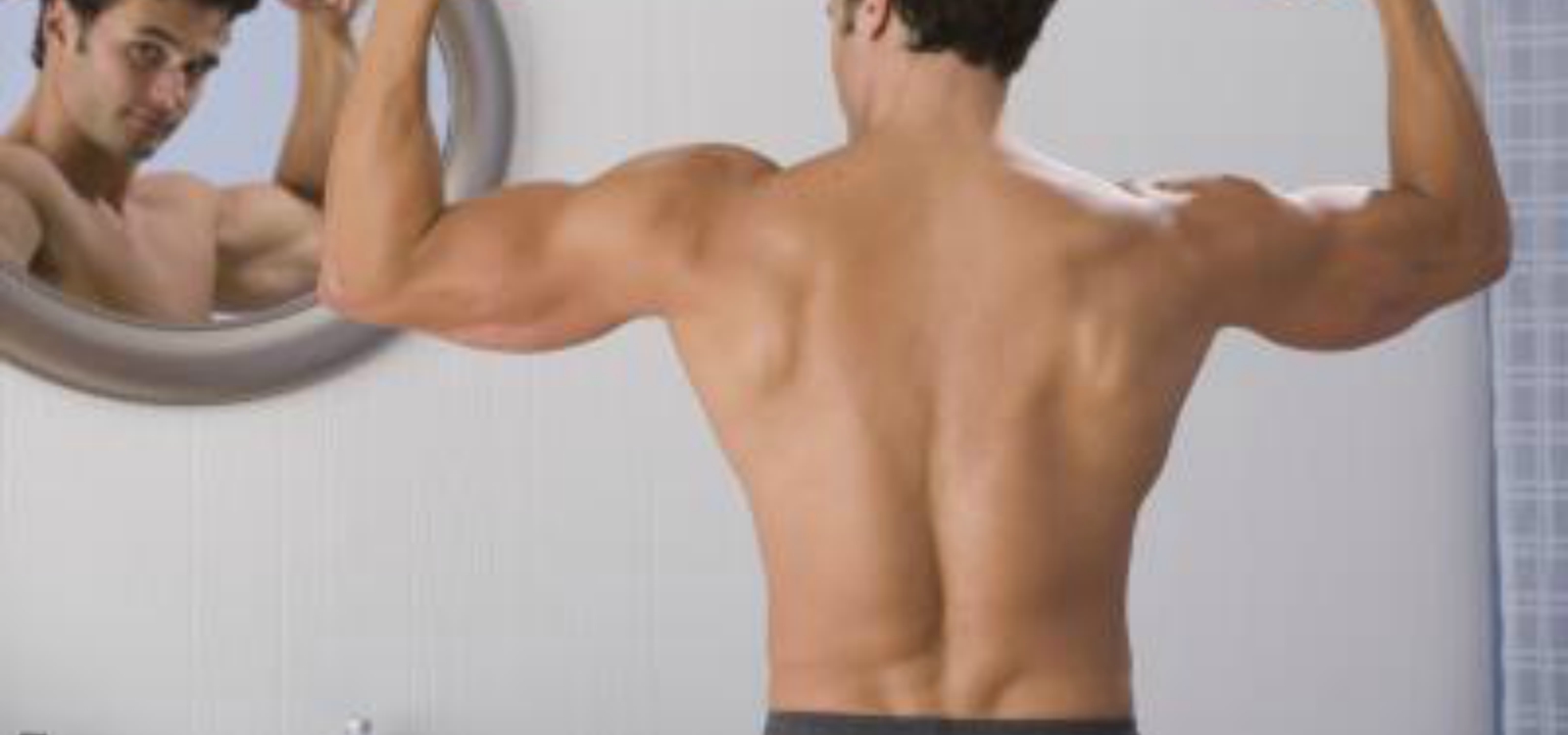
Womp womp womp.
Remember, you don’t just want well-developed traps—you also want:
- Wide lats that extend low down the torso, creating that pleasing V-taper.
- Bulky rhomboids that create “valleys” when flexed.
- Clear development and separation in the teres muscles and infraspinatus.
- A thick, “Christmas tree” structure in the lower back.
And that requires a lot more work than most people realize.
I know how this goes, too. I trained traps at least twice per week, and I mostly did sloppy smith-machine or dumbbell shrugs with some high-rep pullups or one-arm dumbbell rows as “finishers,” and it didn’t get me very far.
So, the key lesson here is this:
You don’t want to focus your workout efforts on just your traps. Instead, you want to focus on exercises that effectively develop all of the major muscles of the back, and then include isolation exercises for the traps if you feel they’re necessary.
And what this really boils down to this is:
Doing a lot of heavy horizontal and vertical pulling.
You need to do a lot of both because horizontal pulling tends to emphasize the muscles that contribute to the thickness of the back, like the traps, erector spinae, and rhomboids, while vertical pulling tends to emphasize the muscles that contribute to width, like the lats.
As we’ll get to in a moment, some shoulder exercises can also train the traps, but heavy pulling exercises are going to give you the most bang for your buck.
Trap Training Mistake #2
Doing Too Much High-rep “Pump” Training
Training to get a pump (rather than to get stronger) is one of the easiest ways to hit a plateau.
I know this mistake well because, surprise surprise, I used to do a lot of “fancy” training techniques like drop sets, supersets, giant sets, and so forth, and very little heavy strength training, which worked fine for a bit… until it didn’t.
It only took a couple years before my progress ground to a halt. I wasn’t gaining much in the way of reps or weight on key exercises, and I wasn’t seeing any significant improvements or changes in my physique.
Well, now I know why.
As a natural weightlifter, your number one long-term goal should be increasing your whole-body strength.
So long as you make that your primary focus in your training, you’ll have no trouble gaining the size you want.
The reason for this is while you can gain a fair amount of size in the beginning without gaining much strength, once you graduate to an intermediate lifter, strength and size become closely correlated.
In other words, once your “honeymoon phase” is over and your body is no longer hyper-responsive to resistance training, you’re going to have to get a lot stronger if you want to continue getting bigger.
Regardless of all the variables that go into programming workouts, here’s a fundamental that you can take that to the bank: If you stop getting stronger, you’ll stop getting bigger.
How do you best do that?
Well, while exercise science is complex and there are many more questions than answers, the evidence is clear on this one: Heavy resistance training is the most effective way to get stronger.
And that’s why us natural weightlifters need to do a lot of heavy weightlifting if we want to gain significant amounts of muscle and strength.
This isn’t a special rule just for the traps, either. It applies equally to every major muscle group in the body, including the smaller, more stubborn ones like the biceps, triceps, and calves.
Therefore, if you want to get thick, wide, defined traps as quickly as possible, then you want to get a strong back as quickly as possible, and that means doing a lot of heavy pulling.
And by “heavy,” I mean working primarily with weights in the range of 75 to 85% of your one-rep max (1RM), or in the range of 8 to 10 (75%) to 4 to 6 (85%) reps.
As you can imagine, certain exercises lend themselves better to this approach and produce better results than others. Cable shrugs, for example, are no deadlift, and band pull-aparts don’t hold a candle to single-arm dumbbell rows.
Therefore, the best trap exercises for building mass are ones that allow you to most increase your strength (I’ll share a list of them in a minute).
“But wait a minute,” you might be thinking. “[SHREDDED FITNESS MODEL] does a billion reps in his back workouts and literally has no neck . . . What gives?”
Unfortunately, steroid use is rampant in this space, and especially among competitors, models, and social media influencers, and these drugs change everything.
For one thing, the traps, shoulders, and upper chest are higher in androgen receptors than other muscles, which is why steroid users often have freakishly large traps.
Here’s a good example of this look, which I pulled from a steroid forum where guys openly talk about their steroid use:
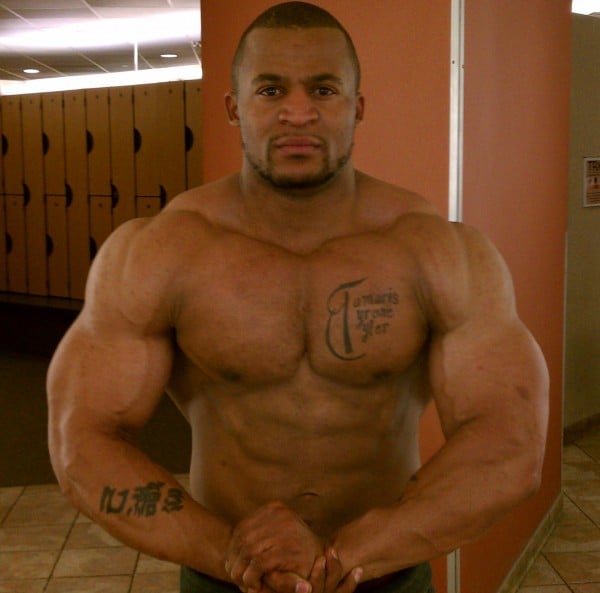
Furthermore, with the right anabolic cocktail, you can sit in the gym for a few hours every day doing set after set, exercise after exercise, and your muscles will just get bigger and bigger. (A bit of reductive, I know, but more accurate than inaccurate.)
It’s not so simple for us mortals, but don’t be discouraged.
Another element of your back training that you have to get right is weekly volume (the total amount of reps you do each week).
If your weekly volume is too low, you’ll gain less muscle than you should or could, and if it’s too high, you’ll fall behind in recovery and struggle with issues related to overtraining, which, in time, means you’ll gain less muscle than you should or could.
Finding the “sweet spot” can be tricky because when you’re doing a lot of heavy weightlifting because the heavier the reps, the fewer you can do each week.
The reason for this is obvious—heavier weights necessitate more recovery—and it’s particularly true with the deadlift, which is the single toughest and most demanding exercise that you can do.
I’ve tried many different workout splits and frequency schemes and what I’ve found works best is in line two extensive reviews on the subject.
When you’re primarily training with heavy weights (80 to 85%+ of your 1RM), optimal volume seems to be about 60 to 70 reps performed every 5 to 7 days.
If you want to learn more about how frequency, intensity, and volume affect muscle growth, check out this article.
The Best Trap Exercises
Out of all the trap exercises you could do, a small handful stand head and shoulders above the rest.
If you simply focus on progressing on the exercises below, you’ll have no trouble building not only great traps, but a great back.
Barbell Deadlift
There’s a good reason the deadlift is at the core of any great weightlifting program.
It’s not only one of the best trap exercises you can do, it’s one of the single best exercises you can do, period.
My traps were weak and underdeveloped until I started really working on my deadlift. Now, several years later, I believe my back is one of the stronger aspects of my physique, and I attribute a lot of that to this exercise.
Many people shy away from the deadlift, though, mostly because it’s hard, but also because they’ve heard it’s inherently bad for your lower back or even dangerous.
This fear makes sense at first glance. Lifting hundreds of pounds off the ground—putting all that pressure on your back, particularly your low-back and erector spinae muscles—should be a recipe for thoracic and lumbar disaster, right?
Well, research shows otherwise. When performed with good form, the deadlift is a fantastic way to build lower back strength and prevent injury.
What about deadlift style? Should you pull conventional, sumo, or hex/trap-bar style?
Here’s a video on what proper conventional deadlift form looks like:
Here’s the sumo version:
And here’s the hex-bar version, also called the trap-bar deadlift:
The style you choose should depend mostly on your preferences. Whichever feels most comfortable and allows you to pull the most weight is probably the best choice.
That said, if you’ve injured your back in the past or have a back-related disease or dysfunction, you may not want to deadlift at all. In this case, you should consult with a sports doctor to see if it will or won’t work for you.
It’s also worth taking a moment to learn about the different grip options for deadlifting, as this is something that gets more and more important as you get stronger.
Barbell Shrug
The barbell shrug is generally considered the king of trap exercises for good reason:
Shrugs of any kind do an excellent job of activating the traps muscles, in particular the upper and middle traps.
Here’s how to do the normal-grip version:
And here’s the wide-grip version:
Research has shown that a slightly wider hand position can further isolate the traps, so it may be worth playing with wider and narrower grips to see what works best for you.
You can also use straps for when the weight gets heavy if your grip gives out before your traps.
Dumbbell Shrug
The dumbbell shrug is similar to the barbell shrug, except that it allows you to use a slightly larger range of motion.
The downside is that most people can’t use as much weight on the dumbbell shrug as they can on the barbell.
Here’s how to do it:
When I was doing shrugs (I’m currently not as I’m happy with my trap development), I liked to alternate between the dumbbell and barbell versions every few weeks to stimulate the muscles differently.
Romanian Deadlift
When performed correctly, the Romanian deadlift is an incredibly effective way to overload the traps.
It puts a tremendous amount of tension on your upper back through a full range of motion, and also does a great job of developing your lats, glutes, and hamstrings.
Like shrugs, grip strength becomes a limiting factor for most, so I recommend you use straps.
Here’s how to do it:
And if this exercise places too much strain on your lower back, you can do the single-leg variation:
Barbell Row
The barbell row is a staple in my back workouts because it trains everything in the back, from stem to stern, and it allows you to move more weight than many other row variations.
Here’s how to do the conventional barbell row:
And I personally prefer a variant called a Pendlay row because it entails a larger range of motion and less leg engagement than the more upright row. Here’s how it looks:
Dumbbell Row
The dumbbell row is one of my favorite back exercises because, like the barbell row, it allows you to safely overload your upper back with a large range of motion.
It also helps prevent muscle imbalances by training each side of the back independently, preventing one side from overpowering the other. As a bonus, it also heavily involves the biceps and rear delts.
Here’s how to do it:
T-Bar Row
The t-bar row is similar to the barbell row, but it places less strain on your spinal erectors and allows you to focus more on your upper back and arms.
This makes it particularly good for later in your back workouts, after your lower back is bushed from big movements like the deadlift and barbell row.
You can do it with a barbell and v-bar attachment, like this:
Or simply use a hammer strength t-bar machine, which looks like this:
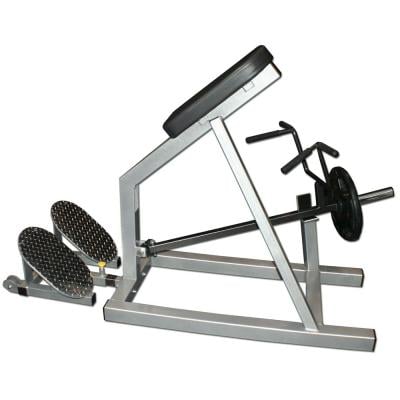
Seated Cable Row (Wide- and Close-Grip)
The seated row is yet another style of row that’s great for building your traps and upper back.
Here’s how you do the close-grip version:
And here’s how to do the wide-grip version:
Cable Face Pull
The face pull is a great exercise for strengthening both the posterior deltoids, rotator cuff muscles, and the traps.
Remember that the upper and middle traps also assist in retracting the scapula, which is exactly what this exercise entails.
Here’s how it’s done:
Dumbbell Side Raise
The side raise is mainly used for training the anterior and lateral head of the deltoids, but research shows that side, front, and rear delt raises cause a surprisingly large amount of trap activation as well (particularly in the upper traps).
Here’s how to do them:
The Ultimate Trap Workout
A well-designed back workout uses mostly compound exercises to train all the major muscles of the upper and lower back, including, of course, the traps.
It also involves both vertical and horizontal pulling, and utilizes wide and narrow grips, and if the traps need particular attention, it will include at least a couple sets that isolate them as much as possible.
And that’s exactly what you’ll find below: a well-rounded back workout that places special emphasis on the traps.
Do this workout once every 5 to 7 days for the next 8 weeks and see how your body responds. I think you’ll be pleasantly surprised.
I’ve also given you several exercise options to choose from.
Choose the ones you feel most comfortable with and stick with those for your first 8 weeks so you can focus on technique and progression (and not learning different movements every couple of weeks).
Deadlift (Conventional, Sumo, or Hex-bar)
Warm up and 3 sets of . . .
4 to 6 reps (~85% of 1RM)
Barbell or T-Bar Row
3 sets of . . .
4 to 6 reps
Barbell or Dumbbell Shrug
3 sets of . . .
6 to 8 reps
Dumbbell or Seated Cable Row
3 sets of . . .
8 to 10 reps (~75% of 1RM)
(Optional) Dumbbell Side Raise or Cable Face Pull
3 sets of . . .
8 to 10 reps
That’s it.
I know, it may look simple, but trust me—it’s not easy, and it works.
Here are a few odds and ends on how to do this workout:
You shouldn’t go to absolute muscle failure every set.
Muscle failure is the point where you can no longer keep the weight moving and have to end the set.
The subject of how often you should train to failure is controversial, and I break it all down in this article, but here’s the gist:
We should take most of our sets to a point close to failure (one or two reps shy), and we should rarely take sets to the point of absolute failure.
If you’re new to weightlifting it can be hard to find this “sweet spot,” but you’ll get a better feel for it as you gain experience on the exercises you’re doing regularly.
Personally, I never train to failure for more than two to three sets per workout, and never on the squat, deadlift, bench press, or military press, as it can be dangerous.
Instead, I reserve my failure sets for isolation exercises like pull-ups, side lateral raises, and biceps curls, and it’s usually a natural consequence of pushing for progressive overload as opposed to deliberate programming.
Once you hit the top of your rep range for one set, move up in weight.
This is how you ensure that you’re progressively overloading your muscles.
For instance, if you get 6 reps with 135 pounds on your deadlift, add 5 pounds to each side of the bar for your next set.
If, on the next set, you can get at least 4 reps with 145 pounds, that’s the new weight you work with until you can pull it for 6 reps, move up, and so forth.
If you get 3 or fewer reps, though, reduce the weight added by 5 pounds (140 pounds) and see how the next set goes. If you still get 3 reps or fewer, reduce the weight to the original 6-rep load and work with that until you can do two 6-rep sets with it, and then increase the weight on the bar.
Rest 3 minutes in between your 4-to-6-rep sets, and 2 minutes in between your 8-to-10-rep sets.
Yes, this is going to feel like a lot of standing around, but resting properly is a hugely important part of heavy weightlifting.
This is the time where your muscles recoup their strength so you can give maximum effort each set.
Make sure you’re eating enough food.
You probably know that you’re supposed to eat a fair amount of protein to build muscle, but total calorie intake plays a major role as well.
Read this article to learn more.
What About Supplements?
I saved this part for last because it’s the least important.
The truth is most supplements for building muscle and losing fat are worthless.
Unfortunately, no amount of pills and powders are going to make you muscular and lean.
That said, if you know how to drive muscle growth with proper dieting and exercise, certain supplements can accelerate the process. (And if you’d like to know exactly what supplements to take to reach your fitness goals, take the Legion Supplement Finder Quiz.)
Here are the ones I use and recommend:
ATLAS Mass Gainer
In an ideal world, we’d get all of our daily calories from carefully prepared, nutritionally balanced meals, and we’d have the time to sit down, slow down, and savor each and every bite.
In the real world, though, we’re usually rushing from one obligation to another and often forget to eat anything, let alone the optimal foods for building muscle, losing fat, and staying healthy.
That’s why meal replacement and “weight gainer” supplements and protein bars and snacks are more popular than ever.
Unfortunately, most contain low-quality protein powders and large amounts of simple sugars and unnecessary junk.
That’s why I created ATLAS.
It’s a delicious “weight gainer” (meal replacement) supplement that provides you with 38 grams of high-quality protein per serving, along with 51 grams of nutritious, food-based carbohydrates, and just 6 grams of natural fats, as well as 26 micronutrients, enzymes, and probiotics that help you feel and perform your best.
ATLAS is also 100% naturally sweetened and flavored as well, and contains no chemical dyes, cheap fillers, or other unnecessary junk.
So, if you want to build muscle and lose fat as quickly as possible and improve the nutritional quality of your diet, then you want to try ATLAS today.
RECHARGE Post-Workout Supplement
RECHARGE is a 100% natural post-workout supplement that helps you gain muscle and strength faster, and recover better from your workouts.
Once it’s had time to accumulate in your muscles (about a week of use), the first thing you’re going to notice is increased strength and anaerobic endurance, less muscle soreness, and faster post workout muscle recovery.
And the harder you can train in your workouts and the faster you can recover from them, the more muscle and strength you’re going to build over time.
Furthermore, RECHARGE doesn’t need to be cycled, which means it’s safe for long-term use, and its effects don’t diminish over time.
It’s also naturally sweetened and flavored and contains no artificial food dyes, fillers, or other unnecessary junk.
So, if you want to be able to push harder in the gym, train more frequently, and get more out of your workouts, then you want to try RECHARGE today.
WHEY+ Protein Powder
Whey protein powder is a staple in most athletes’ diets for good reason.
It’s digested quickly, it’s absorbed well, it has a fantastic amino acid profile, and it’s easy on the taste buds.
Not all whey proteins are created equal, though.
Whey concentrate protein powder, for example, can be as low as 30% protein by weight, and can also contain a considerable amount of fat and carbs.
And the more fat and carbs you’re drinking, the less you can actually enjoy in your food.
Whey isolate protein powder, on the other hand, is the purest whey protein you can buy. It’s 90%+ protein by weight and has almost no fat or carbs.
Another benefit of whey isolate is it contains no lactose, which means better digestibility and fewer upset stomachs.
Well, WHEY+ is a 100% naturally sweetened and flavored whey isolate protein powder made from exceptionally high-quality milk from small dairy farms in Ireland.
It contains no GMOs, hormones, antibiotics, artificial food dyes, fillers, or other unnecessary junk, and it tastes delicious and mixes great.
So, if you want a clean, all-natural, and great tasting whey protein supplement that’s low in calories, carbs, and fat, then you want to try WHEY+ today.
PULSE Pre-Workout
Is your pre-workout simply not working anymore?
Are you sick and tired of pre-workout drinks that make you sick and tired?
Have you had enough of upset stomachs, jitters, nausea, and the dreaded post-workout crash?
Do you wish your pre-workout supplement gave you sustained energy and more focus and motivation to train? Do you wish it gave you noticeably better workouts and helped you hit PRs?
If you’re nodding your head, then you’re going to love PULSE.
It increases energy, improves mood, sharpens mental focus, increases strength and endurance, and reduces fatigue…without unwanted side effects or the dreaded post-workout crash.
It’s also naturally sweetened and flavored and contains no artificial food dyes, fillers, or other unnecessary junk.
Lastly, it contains no proprietary blends and each serving delivers nearly 20 grams of active ingredients scientifically proven to improve performance.
So, if you want to feel focused, tireless, and powerful in your workouts…and if you want to say goodbye to the pre-workout jitters, upset stomachs, and crashes for good…then you want to try PULSE today.
Again, if you feel confused about what supplements you should take to reach your goals, take the Legion Supplement Finder Quiz to learn exactly what supplements are right for you. It’s the best way to ensure you get the most out of your supplement regimen.
The Bottom Line on Trap Exercises
In many ways, trap training is like training the shoulders or calves.
If you’re like most people, you’re dealing with a stubborn muscle group that responds best to a handful of compound exercises, and that sometimes need some isolation work to wring out every last bit of muscle growth.
Here’s what it really comes down to:
The best way to build great traps is to build a great back, and the best way to build a great back is to get really strong on a handful of key exercises.
There are no shortcuts or “secrets,” and you’re not going to get there in a few weeks or months. That said, if you keep showing up and putting in the work, and if you make sure that you’re doing everything right outside of the gym as well (nutrition, rest and recovery, supplementation if you’re so inclined), then you will get there.
Good luck and happy training!
Oh, and if you enjoyed this article or know someone who could benefit from bigger traps, I’d really appreciate it if you shared this article with them on Facebook. The more these articles get shared around, the more of them I’ll write. Thanks!
What’s your take on the best trap exercises? Have anything else to share? Let me know in the comments below!
Scientific References +
- Schoenfeld, B. J., Pope, Z. K., Benik, F. M., Hester, G. M., Sellers, J., Nooner, J. L., Schnaiter, J. A., Bond-Williams, K. E., Carter, A. S., Ross, C. L., Just, B. L., Henselmans, M., & Krieger, J. W. (2016). Longer interset rest periods enhance muscle strength and hypertrophy in resistance-trained men. Journal of Strength and Conditioning Research, 30(7), 1805–1812. https://doi.org/10.1519/JSC.0000000000001272
- Sundstrup, E., Mortensen, O. S., Jakobsen, M. D., Andersen, L. L., Andersen, C. H., & Zebis, M. K. (2012). Muscle activation strategies during strength training with heavy loading vs. repetitions to failure. Journal of Strength and Conditioning Research, 26(7), 1897–1903. https://doi.org/10.1519/JSC.0b013e318239c38e
- Pizzari, T., Wickham, J., Balster, S., Ganderton, C., & Watson, L. (2014). Modifying a shrug exercise can facilitate the upward rotator muscles of the scapula. Clinical Biomechanics, 29(2), 201–205. https://doi.org/10.1016/j.clinbiomech.2013.11.011
- Castelein, B., Cools, A., Parlevliet, T., & Cagnie, B. (2016). Modifying the shoulder joint position during shrugging and retraction exercises alters the activation of the medial scapular muscles. Manual Therapy, 21, 250–255. https://doi.org/10.1016/j.math.2015.09.005
- Peterson, M. D., Rhea, M. R., & Alvar, B. A. (2005). Applications of the dose-response for muscular strength development: A review of meta-analytic efficacy and reliability for designing training prescription. Journal of Strength and Conditioning Research, 19(4), 950–958. https://doi.org/10.1519/R-16874.1
- Wernbom, M., Augustsson, J., & Thomeé, R. (2007). The influence of frequency, intensity, volume and mode of strength training on whole muscle cross-sectional area in humans. In Sports Medicine (Vol. 37, Issue 3, pp. 225–264). Sports Med. https://doi.org/10.2165/00007256-200737030-00004
- Kadi, F., Bonnerud, P., Eriksson, A., & Thornell, L. E. (2000). The expression of androgen receptors in human neck and limb muscles: Effects of training and self-administration of androgenic-anabolic steroids. Histochemistry and Cell Biology, 113(1), 25–29. https://doi.org/10.1007/s004180050003
- Schoenfeld, B. J., Grgic, J., Ogborn, D., & Krieger, J. W. (2017). Strength and hypertrophy adaptations between low- vs. High-load resistance training: A systematic review and meta-analysis. In Journal of Strength and Conditioning Research (Vol. 31, Issue 12, pp. 3508–3523). NSCA National Strength and Conditioning Association. https://doi.org/10.1519/JSC.0000000000002200
- Johnson, G., Bogduk, N., Nowitzke, A., & House, D. (1994). Anatomy and actions of the trapezius muscle. Clinical Biomechanics, 9(1), 44–50. https://doi.org/10.1016/0268-0033(94)90057-4
